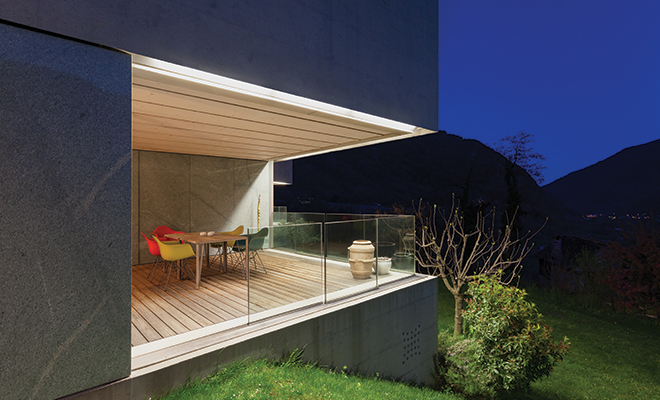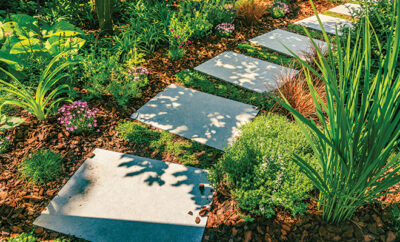
Living in a Concrete Home
Concrete is emerging as a sustainable building material for homes. Although it has long been used for floors and foundations, it’s becoming increasingly popular for walls, roofs and interior surfaces.
There are many advantages to using concrete for home construction. Concrete structures are strong, long-lasting and resistant to environmental threats such as wind, rot and fire. This can bring savings in homeowners insurance. Homes made from concrete are also more energy efficient, since concrete’s mass keeps heated or cooled air inside.
Using concrete for homes supports green construction by requiring less wood, although lumber may be used for interior framing. This type of construction also minimizes waste, since only the amount of concrete needed for the project is produced. Thanks to innovations in the treatment of concrete surfaces, a wide range of color and textures can be applied to increase the aesthetic appeal of a concrete home. In many cases, the interior and exterior of a concrete house will not look any different from surrounding wooden houses.
Although a concrete home may cost slightly more to build, extra construction expenses are recovered over time thanks to energy savings. Thanks to new technologies such as insulated concrete forms, in which hollow insulating forms are filled with concrete to form a home’s structure, the cost differences may shrink even more in the near future.
Concrete is the most widely used building material worldwide. It should be noted that it’s not traditionally seen as a green product since its manufacturing process is responsible for about 8 percent of global CO2 emissions. Its production is water intensive, accounting for a tenth of industrial water consumption throughout the world. Although buildings constructed from concrete are more energy efficient, there is pressure on the concrete industry to find ways to decrease the impact of the manufacturing process on the environment.
Terri Schlichenmeyer and her partner recently completed construction of their Wisconsin dream house. The chose concrete as their building material for a variety of reasons, including lower heating and cooling costs and savings in maintenance expenses over time. They also were attracted by the noise resistance provided by thicker concrete walls as well as the home’s resistance to insects and rodents.
“When we were deciding on the kind of home we wanted, we visited a concrete home in progress and the very first thing that struck me was that it was like standing inside a boulder,” says Terri. “Solid. Formidable. Just rock-like, with a very comfortable feeling of being enveloped. When we looked out the window hole (there was no glass in the window yet), we realized that we couldn’t hear traffic on the nearby road and we were sold right then.”
Since moving into her new home, Terri has seen a big reduction in utility costs. Heating and electricity bills for their first month in the home were a fraction of what they were in her former 1959 wooden ranch house, where they could run several hundred dollars per month during severe weather. Although they had air conditioning installed, the home retains cool air so well that she wonders how much they’ll use it. Energy efficiency was their goal when choosing concrete, but they also were sold on the fact that it’s “waterproof, windproof, rodent-proof, bug-proof, fireproof (the concrete of it) and bulletproof.” Terri’s favorite thing about the house is the quiet.
Wide halls and doorways give Terri’s home a spacious feeling. Low-pile, industrial grade carpets provide warmth. She used a variety of upcycled and recycled materials when decorating her new home. Antique mirrors for the bathrooms were found at her local Habitat for Humanity ReStore. She also searched second-hand stores for antique glass doorknobs to use as cabinet pulls in the kitchen.
Terri and her partner spent a year learning about concrete homes. The construction took an additional six months. As they worked with an architect and contractor during the design and construction of their home, they learned that last-minute changes can be more difficult compared to a traditional wooden house. “They don’t say, ‘It’s set in concrete’ for nothing,” she says.
Terri suggests that you plan to make your concrete home as big as possible, since adding to the structure at a later date can be much more expensive. She and her partner considered adding a sunporch later to increase their living space, but went ahead and did it during the initial construction phase when they found out it wouldn’t add a significant amount to the overall cost of the house.
A final piece of advice from Terri: “If you are absolutely SURE you know what you want and you’re ready to have a home for the long run, I can’t say this enough: think concrete. Absolutely, think concrete.” ■
Sources: hgtv.com, concretenetwork.com and bbc.com.







